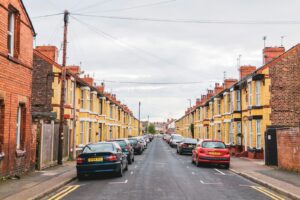A revolutionary scheme clears the streets of Sydney
If you are planning a trip to Sydney and need transport to get around, an initiative that has seen bike trips more than double in three years is proving that two wheels are better than four – for your health and the environment.
Transport and infrastructure challenges, along with historically low cycling rates are being tackled as a part of the Sydney 2030 blueprint, which involves a number of ambitious plans to make Sydney ‘green, global and connected’. As a result, the city aims to provide 200km of cycle lanes by 2030, with 55km separated from traffic.
Fiona Campbell, the council’s manager of cycling strategy, leads the implantation of the City of Sydney’s innovative ‘Cycle Strategy and Action Plan’ which focuses on developing a network of cycleways to connect major destinations within and beyond the City of Sydney. With the support of city leaders and substantial capital investment (almost £50m in five years) Campbell and her team are working towards the goal to make 10% of journeys in the city to be by bike.
The network will include 10 regional routes comprising bike lanes, shared paths, and separated cycleways. When the network is complete the result will be an intricate web of cycleways across the city and outer regions, and at a glance, not dissimilar to London’s underground tube network – except that Sydney’s will be above ground, fuelled by foot, and 100% emission free.
‘Sydneysiders are cycling in record numbers. In the last three years our independent counts have shown a 113% increase in bike trips, and as we build and connect more of our network, even more people will start riding – and as more drivers become used to encountering people riding to work or shops or childcare, the traffic environment improves,’ Fiona said.
‘Cycling is helping to reduce congestion around the world in places like London, New York, Paris, Barcelona and Melbourne where good infrastructure makes riding a bike a real option and encourages more riders to choose two wheels and help ease traffic congestion.’
While umbrella support for a greener Sydney exists, there has been opposition to the implementation from state government, local businesses and the media, which Campbell and her team have countered by engaging with local businesses, responding to community needs and using social media. The council provide courses on cycling etiquette; run safe cycling courses; provide free bike maintenance; and free bells for sections of shared use pathways.
While the rapid rise in the number of bike riders across all areas of the city is wheeling in health and lifestyle benefits, the economic and environmental impacts are also quantifiable and resolve issues, which on paper, look rather clogged. If Sydney’s traffic grows the forecasted 23% in 15 years, for example, congestion costs to Sydney businesses and the community will high jump from £2.1bn a year to £4.7bn a year.
However, independent research commissioned by the council found that the proposed regional network would reduce Sydney’s traffic congestion by 4.3 million car trips per year and save £58.7m in reduced congestion costs. The network would deliver at least £303m – almost £2.40 for every pound spent – in net economic benefits over 30 years, the findings revealed.
And with half of all car trips less than five kilometres, more and more residents are seeing the sense in cycling to work; a journey that equates to a mere 15 minute ride. Pressure on public transport will ease as more seats become available and stressful journeys to and from work may decrease as more people swap car keys for cycling helmets.
The research study established environmental improvements such as reduced greenhouse gas emissions as well as improved air quality and lower noise pollution. And with 85% of people stating they would be more likely to take up cycling or ride more often if a safe cycleway network was provided, the number of bike riders on Sydney’s roads is set to increase.
- For more information on Sydney’s bike network, visit: sydneycycleways.net.
- Written by Evie Serventi, a freelance journalist
















